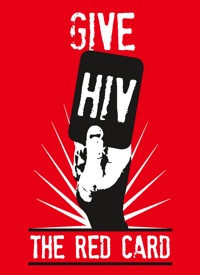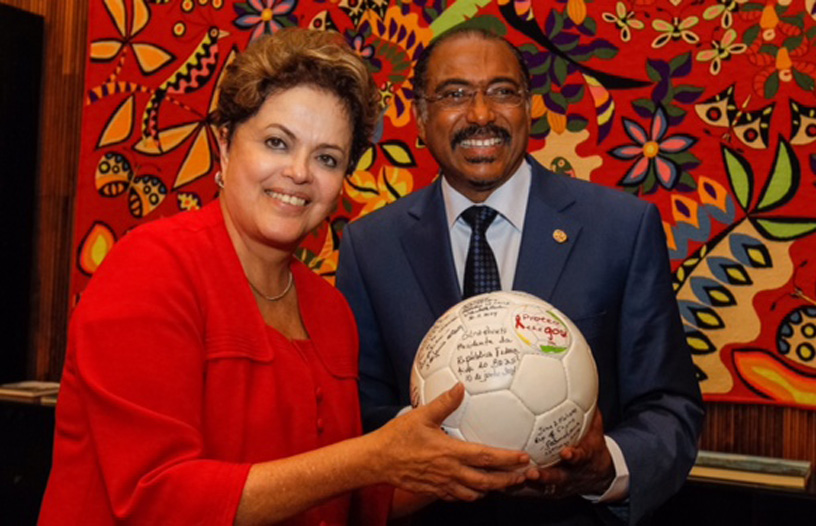By Anna Charles
At this time of year, soccer fans
(or football fans, depending on where you are from) around the world are turning their minds and
their televisions to the 2014 FIFA World Cup. With millions across the globe tuning in to cheer for their favorite teams, many international health organizations are
tapping into this soccer fanaticism, and employing soccer as an innovative
medium to talk about HIV. Soccer is one of, if not the most popular
sport in the world, and groups such as UNAIDS and Grassroots Soccer are using
the excitement around this sport to reach out to youth and to facilitate programs
to educate them about HIV prevention and stigma reduction.
 Another organization, Grassroots
Soccer, has taken a different approach to using soccer as a means of reducing
HIV. They have built and refined a curriculum called “Skillz”, a new
approach that uses soccer exercises to help kids learn about HIV risks and
prevention. For example, in one of their
activities, called “Risk Field,” “participants dribble a soccer ball in between
cones representing HIV-related risks—multiple partners, drug/alcohol abuse,
sugar daddies, etc. If one player hits a cone, he and his teammates must
complete 3 pushups, showing how the consequences of one person’s risk can not
only affect him, but also his friends, family, and community" [4]. This is a revolutionary new way of educating kids, and allows the participants to feel more engaged in what they are learning.
Another organization, Grassroots
Soccer, has taken a different approach to using soccer as a means of reducing
HIV. They have built and refined a curriculum called “Skillz”, a new
approach that uses soccer exercises to help kids learn about HIV risks and
prevention. For example, in one of their
activities, called “Risk Field,” “participants dribble a soccer ball in between
cones representing HIV-related risks—multiple partners, drug/alcohol abuse,
sugar daddies, etc. If one player hits a cone, he and his teammates must
complete 3 pushups, showing how the consequences of one person’s risk can not
only affect him, but also his friends, family, and community" [4]. This is a revolutionary new way of educating kids, and allows the participants to feel more engaged in what they are learning.
Grassroots Soccer is using methods that have proven results. One
study in Zimbabwe found that, among many other encouraging statistics, students
participating in the program who knew where to go for problems related to HIV
increased dramatically, from 47% to 76% [5]. Like the Protect the Goal campaign,
Grassroots Soccer is backed by a number of well-known players, such as AlexSong, Oguchi Onyewu, Christen Press, and more, [6] and is therefore able to reach a wide audience of fans that look up to and respect these players.
As evident by the campaigns and programs above, it is undeniable that sports have a great influence and can be used to unite and educate groups of people. Nelson Mandela said it best, “Sport has the power to change the world. It has the power to inspire. It has the power to unite people in a way that little else does. It speaks to youth in a language they understand. Sport can create hope where once there was only despair.” Soccer is more than just a game; it’s a powerful tool that can bring motivation, solutions, and hope to people around the world working to end HIV and the associated stigma and discrimination.
References:
2.http://www.unaids.org/en/resources/presscentre/featurestories/2014/june/20140611ptgbrazilpresident/



No comments:
Post a Comment